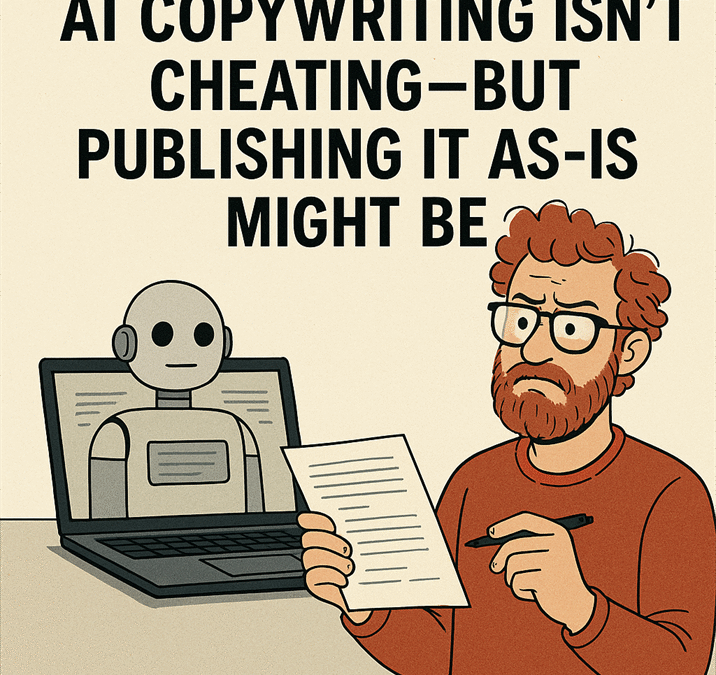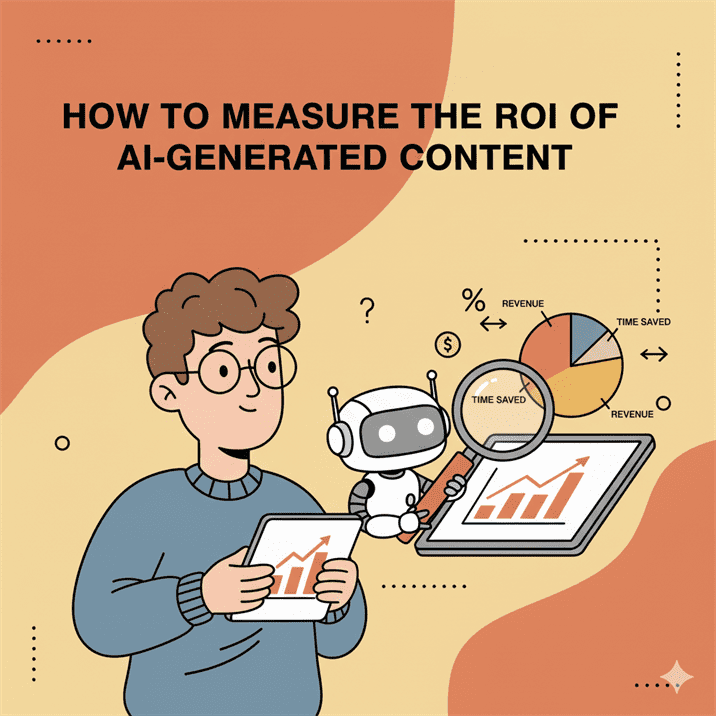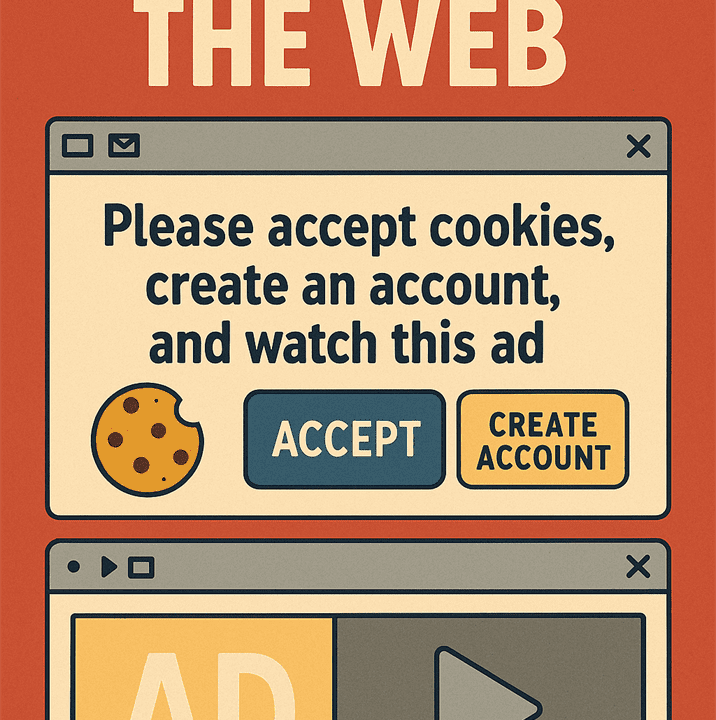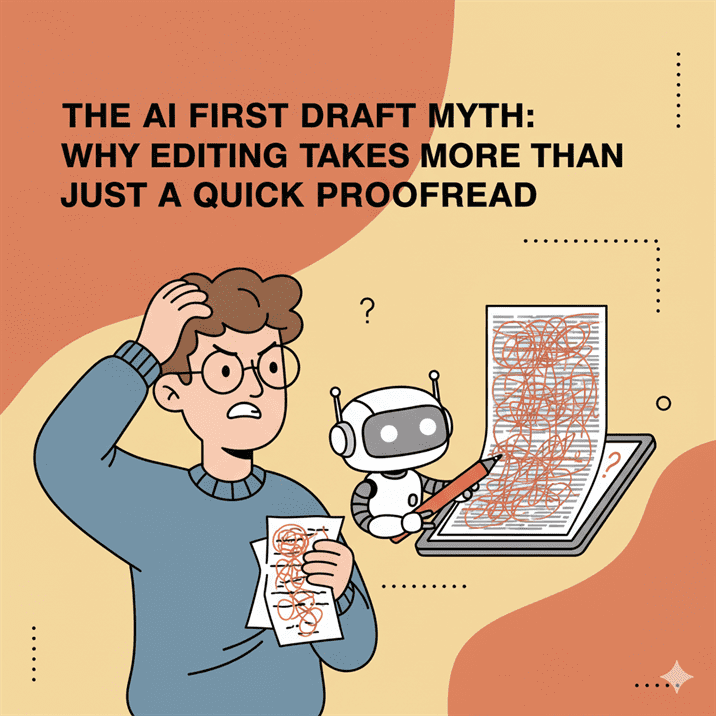AI copywriting isn’t cheating but publishing as-is might be

Okay, gather ‘round. Let’s have a little heart-to-heart about this wild, wondrous creature called AI copywriting.
Spoiler alert: it’s not the digital equivalent of stealing someone’s lunch from the office fridge (although, full disclosure, AI is also really good at taking things, like ideas, without giving credit).
But before you start tossing your keyboards out the window and running for the hills, let’s dial it back a bit.
Because while AI can be pretty spectacular, it’s not quite ready for primetime, no matter how many Instagram ads you see promising instant perfection.
Let’s set the record straight.
Using AI for copywriting isn’t cheating. But there’s a huge “but” here.
If you’re publishing that AI generated copy as-is, well, then we might be having a different conversation.
Sure, the machine churned out something that looks good on paper, but the real question is, does it actually work?
Ethics and quality: The blurry lines
This is where things get murky.
Let’s be honest, AI is amazing at putting words together, spitting out grammar rules like a robot librarian on a caffeine binge.
It’s incredible for knocking out drafts, automating the boring stuff (hello, research summaries), and even offering a fresh take when you’re staring at the screen, utterly convinced that your brain has melted into a puddle of writer’s block.
But here’s the catch: AI doesn’t understand context.
It doesn’t know if your punchline will make someone laugh, or if your blog post will leave them nodding off in a catatonic trance.
And as much as AI can mimic the cadence of human language, it doesn’t really “get” things like tone, nuance, or that little dash of sass that makes your copy pop.
That’s where things can get tricky.
Because, technically, if you’re just cranking out AI generated content without checking for clarity, engagement, or factual accuracy, You might not just be letting the robot do the work.
You could be enabling a slip into something more questionable.
And here’s the kicker: Plagiarism is still on the table.
Not because the machine is plagiarising, but because sometimes AI pulls from vast pools of information to form its sentences, creating something that sounds original but is a bit too close to someone else’s work.
It’s like having a great idea, then realising you read that idea in a book last week but forgot to credit the author.
In this scenario, you’re both the perpetrator and the unwitting accomplice.
Assistance, automation, or full-on plagiarism?
The lines between assistance, automation, and plagiarism are blurrier than a foggy morning in Northumberland.
Assistance is when you use AI to brainstorm, generate ideas, or give you the spark you need to kickstart your creativity.
That’s fine. In fact, it’s downright clever.
AI can help us go from zero to “hey, this could work” in minutes, and honestly, that’s pretty revolutionary.
But automation? Well, that’s where we need to tread carefully.
Automating repetitive tasks like social media posts or email marketing is nifty. But if you’re letting AI handle your most important, high-impact content without any human oversight, then that could start to smell a little bit like cheating.
Because even if AI’s grammar is flawless, it might miss the mark when it comes to strategic messaging, emotion, or cultural context.
It’s like sending your assistant to a business meeting with a script they didn’t write, and hoping they hit the right note.
Will they? Maybe. But they might also accidentally spill coffee on the boss.
Now, full-on plagiarism is when you take AI generated content and publish it without thinking twice.
That’s where the real ethical issue lies.
You’re not just using AI to assist your creative process. You’re passing off a machine’s output as your own.
And while AI can be the ultimate assistant, it’s also a potential liability if you’re not double-checking every word it spits out.
That’s a definite no-no in the world of content creation.
The editor: The last line of defence
Enter the editor. Yes, folks, that’s you (or me). You are the superhero of the content world, swooping in with your red pen to save the day.
This is why the editor is the last line of defence against all manner of AI misadventures.
Sure, AI can generate 1,000 words in a flash, but only you, the editor, can spot the awkward phrasing, the factual inaccuracies, the tone that’s as dry as a biscuit left in the oven for too long.
You see, AI is great at automation, but it’s not great at intuition.
It doesn’t know what will resonate with your audience, or whether your quirky metaphor will hit the mark or leave people scratching their heads.
That’s why an editor’s job is so important.
You’re there to make sure the final product is both quality controlled and aligned with your brand voice.
As for AI-generated drafts? You can absolutely use them as a starting point.
But never, ever hit “publish” without your editor’s magic touch.
Sure, you’re not writing the entire thing from scratch, but you’re still the one guiding the ship, making sure it doesn’t crash into an iceberg of missed opportunities.
So, what’s the takeaway?
AI isn’t evil. It’s not some robotic overlord trying to steal your job.
It’s a tool, a helper, and at times, a creative partner. But like any tool, it requires skill and care to use effectively.
The problem isn’t that AI is doing the work. It’s that AI isn’t fully capable of doing the work alone.
You, the editor, the human behind the machine, need to give it context, clarity, and a sprinkle of magic.
AI copywriting isn’t cheating, but publishing it without a once-over from a human? That might be the real crime!



